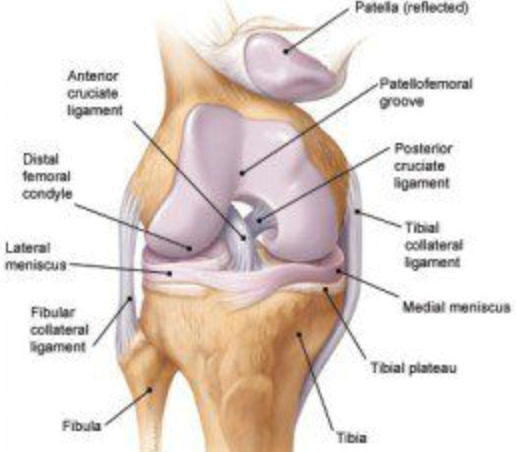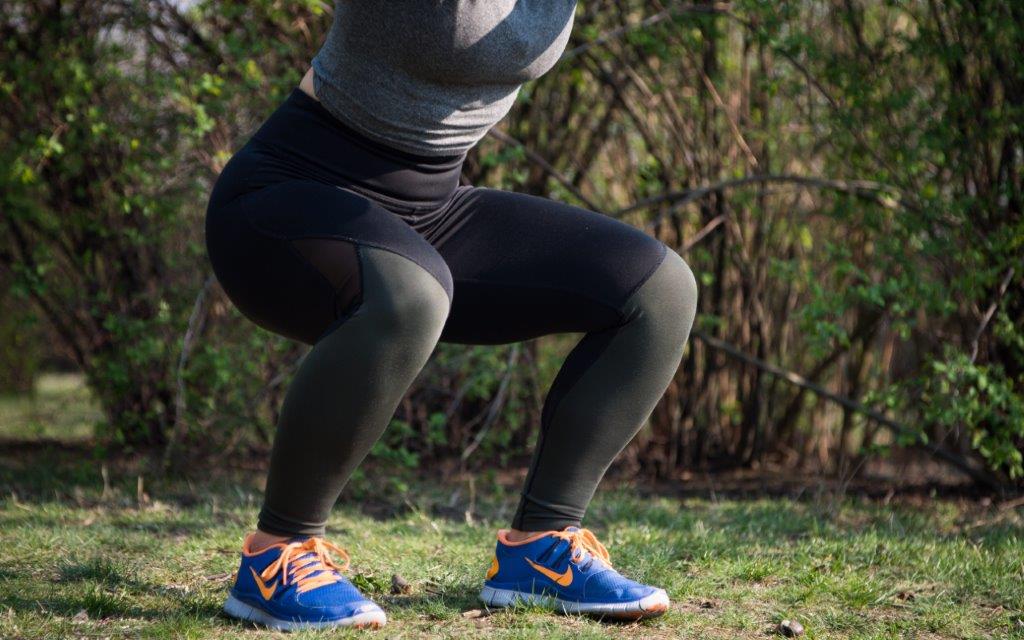Are you training for the up and coming HBF run for a reason or City to Surf and knee pain is holding you back? Are you in the early stages of your football or netball season but missing games or playing below your best due to knee pain? Read on further to see how one of our Bicton Physiotherapists can help you.
Knee joint anatomy
The knee joint is made up by the thigh and shin-bone forming a hinge joint allowing the knee to bend and straighten. The kneecap is also part of the knee joint and known as the Patello-femoral joint, which is the attachment point for all of the quadriceps muscles. Between the 2 bones as pictured to the right there is a lot of ligaments and cartilage providing stability which can all become a source of pain.
Where does my knee hurt?
Pain location is a key piece of information as to what could be causing your knee pain. Pain in the front of the knee is the most common knee presentation and usually a mal-tracking issue of the kneecap on the bottom of the femur (thigh bone) associated with running, squats, taking stairs. The patella tendon, patella fat-pad and bursa are other causes of anterior knee pain.
When does my knee hurt?
The aggravating activity is another key piece of information your Bicton Physiotherapist will want to know when diagnosing your knee pain. Meniscus/cartilage related knee pain is often only sore in a deep squat position compared to kneecap mal-tracking pain, which is usually more irritated at the first part of a squat. If your pain is running related is it at the start of the run and then warms up but is sore after or the next morning? Your pain could be tendon related. If the pain doesn’t warm up and stays sore through out the run and after again it could be more meniscus (cartilage).
Can my pain be coming from somewhere else?
 The short answer is Yes! Though it is rare our lower back can cause isolated lateral (outside) or medial (inside) knee pain. Our hip joint can also refer to the knee joint. More commonly knee pain can be indirectly caused from other areas due to faulty biomechanics. The knee needs the hip and ankle to be nice and stable to reduce load, this can be experienced by balancing on a few pillows at home or a bosu ball in the gym with your knee partially bent, notice how much the knee sways in and out as you try to maintain your balance? Now imagine running with a weak hip or ankle and think about how much harder the knee muscles have to work to provide the required stability.
The short answer is Yes! Though it is rare our lower back can cause isolated lateral (outside) or medial (inside) knee pain. Our hip joint can also refer to the knee joint. More commonly knee pain can be indirectly caused from other areas due to faulty biomechanics. The knee needs the hip and ankle to be nice and stable to reduce load, this can be experienced by balancing on a few pillows at home or a bosu ball in the gym with your knee partially bent, notice how much the knee sways in and out as you try to maintain your balance? Now imagine running with a weak hip or ankle and think about how much harder the knee muscles have to work to provide the required stability.
What if I suspect my knee pain is serious?
Serious knee injuries like ligament ruptures or fractures are usually associated with a traumatic mechanism of injury followed by severe pain. Our Bicton Physiotherapists can confidently assess and diagnose these and arrange for medical imaging as required.
Don’t let knee pain stop you from performing at your best or enjoying your chosen physical activity. Come and see one of our Bicton Physiotherapists and put an end to your knee woes!
